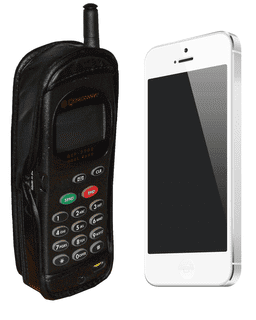
Device Type
You already know about the importance of optimizing your website for mobile. More and more visitors are searching and finding answers through their mobile devices. Not only are they visiting your website, they are also opening the emails you send on a mobile device. Mobile emails have seen a 500% increase over the past 4 years, with 53% of emails now being opened on mobile. (Litmus)
Mobile email engagement is often influenced by the time the email is sent. Emails sent in the morning (while contacts are on their way to work) or in the late afternoon (when they are on their way back home) are more likely to be opened on a mobile device. While emails that are sent during regular work hours are more likely to be opened on a desktop.
Mobile usage is largely dependent on your audience. If you are targeting a busy executive who’s often in and out of their office, you’re more likely to catch them on mobile as opposed to a website designer who is more likely to be on their desktop. Although it’s a best practice to optimize for both, if you’re audience heavily favors one format over the other, polish up your email up to accommodate their preference.
Time Spent
There’s a lot of information behind the amount of time your audience spends reading an email. Different types of emails demand different amounts of engagement. For example a weekly blog summary can easily be read in 5 seconds, and you can assume that the reader either read a title worth their while and clicked-through, or didn’t and just clicked back.
However, if you send a lead nurturing email filled with information and find readers only staying for 3 seconds, then they either didn’t immediately engage, or your persuasion skills are bar none. This metric is great for gaining insight into the depth of your readers’ engagement, allowing you to adjust your email length appropriately.
You can analyze and set goals based around these times for specific emails. Categorize those emails based on the importance of the content. For example, you should be getting more attention in an event summary email than in an email that is just a friendly reminder for an event. If not, you may want to take a look at your content to see if it really is engaging or needs re-wording.
Engagement Over Time
Optimizing your email send times can make the difference between a 40% open rate and an 80% open rate. Unfortunately, this isn’t a one-size fits all, what works for me may or may not work for you. Once again, it comes down to your specific audience.
The best way to find out what works for you and your business is to experiment with different times, and collect the data on your audience’s engagement. Pool together the times most emails are being opened, how long your audience is waiting to open emails, and the type of email it is.
This will help you determine not only the best time time to send your emails, but also how much time to put in between each email, especially when using automation.
It’s important to keep track of fundamental metrics, such as click-through rates and open rates, but don’t forget to use these 3 metrics. Often overlooked, they can help you fine-tune and fully optimize your email campaigns.
*Image courtesy of Irfan Nasir via Wikimedia
